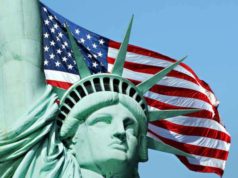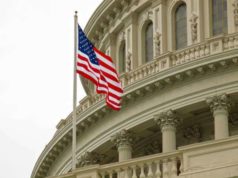
The Shays’ Rebellion: A Defining Moment in Early American History
The Shays’ Rebellion, which occurred from 1786 to 1787, stands as a significant event in the early history of the United States. This armed uprising, primarily in western Massachusetts, was driven by economic grievances and political discontent, shedding light on the weaknesses of the Articles of Confederation and ultimately contributing to the call for a stronger federal government. In this article, we will explore the causes, events, and consequences of the Shays’ Rebellion.
Background and Causes
The aftermath of the American Revolutionary War left many farmers and veterans in financial distress. Economic challenges, including high taxes and heavy debt, weighed heavily on the rural population of Massachusetts. Compounding these issues were the state government’s failure to provide relief and the imposition of strict debt collection measures.
Daniel Shays and Leadership
Daniel Shays, a veteran of the Revolutionary War and a farmer, emerged as a prominent figure in the rebellion. He and other leaders mobilized discontented farmers, who became known as “Shaysites,” to protest against the oppressive economic conditions and government policies.
The Rebellion Begins
In August 1786, the rebellion began with the seizure of a state arsenal in Springfield, Massachusetts, in an attempt to obtain weapons and ammunition. Shays and his followers sought to force the government to address their grievances and provide economic relief.
Government Response
The Massachusetts government, led by Governor James Bowdoin, responded by mobilizing state militias to suppress the rebellion. A series of confrontations and skirmishes followed, with the most significant being the Battle of Springfield in February 1787. The state’s forces successfully dispersed the rebels, and Daniel Shays fled to Vermont.
Consequences
1. Weakening of the Articles of Confederation: The rebellion exposed the weaknesses of the Articles of Confederation, the nation’s first constitution. It highlighted the inability of the central government under the Articles to maintain order and address domestic unrest.
2. Calls for Constitutional Reform: Shays’ Rebellion contributed to the growing consensus among American leaders that a stronger federal government was needed. The rebellion served as a catalyst for the Constitutional Convention of 1787, where delegates gathered to draft the U.S. Constitution.
3. Impact on American Politics: The events of the rebellion influenced political discourse and led to the emergence of Federalists, who supported a stronger central government, and Anti-Federalists, who were more cautious about granting excessive power to the federal government. These debates ultimately shaped the content of the U.S. Constitution and the Bill of Rights.
4. State-Level Reforms: In response to the rebellion, Massachusetts and other states implemented measures to address economic grievances. Debt relief laws and economic reforms aimed to ease the financial burden on farmers and prevent further uprisings.
Legacy
The Shays’ Rebellion serves as a critical chapter in American history, demonstrating the challenges faced by the young nation in the post-Revolutionary period. It revealed the fragility of the Articles of Confederation and the need for a more effective federal government. Ultimately, the rebellion played a pivotal role in the creation of the U.S. Constitution, which established a stronger and more centralized government capable of maintaining order and addressing the concerns of its citizens.
In conclusion, the Shays’ Rebellion was a defining moment in early American history, highlighting the economic hardships faced by many citizens and the limitations of the Articles of Confederation. It propelled the nation toward a new constitutional framework that would become the foundation of the United States’ enduring system of government.
Between the years of 1786 to 1787, Daniel Shays, a Massachusetts farmer and a Revolutionary War veteran, amassed over 5,000 bankrupt farmers and organized a rebellion against a sovereign Massachusetts State Government. The rebellion was spawned in the wake of the ratification of the Articles of Confederation, which granted sovereignty to each of the 13 states, thereby forbidding any type of involvement on the part of a central government.
The Articles of Confederation refused the central government the right to taxation, and as a result, they could merely request individual State funding in forms of donations. Furthermore, they were powerless to combat any refusal of payment made by any individual State. However, the Articles of Confederation allowed the central government the authority to coin money. This proved to be financially insoluble because the central government had expenses, such as the upkeep of both a national military, as well as a national postal service. Yet, due to insufficient funds, the central government was forced to coin money without any reasonable financial backing, instantly devaluing the national currency.
The flooding of the commercial market with what was essentially worthless currency sent the central government spiraling into financial ruin. In addition, foreign investors and British landholders were unanimously demanding the repayment of all debts. Because the individual states were granted the authority to regulate all trade and tariff regulation, they began to institute exorbitant, and what Daniel Shays considered to be unjust, tariffs on interstate trade. As a result, farmers (and other working class merchants) were unable to participate in commerce on account that they could not afford the heightened tariffs. As their property became foreclosed, their families starved and their loved ones were forced into debtor’s prison, Daniel Shays saw no other option but to rebel against the sovereign Massachusetts State Government. His rebellion was known as Shays’ Rebellion.
Though only leading a force of 5,000 farmers and merchants, Shays’ Rebellion lasted for a full year because the Articles of Confederation forbid the central government to interfere or involve itself in any State’s respective issues. As a result, the Massachusetts State militia engaged in fierce combat with Daniel Shays’ militia. Had the central government been allowed jurisdiction over remedying the damage caused by Daniel Shays’ rebellion, it would have sent the national militia to intervene. Yet due to governmental regulations set forth in the Articles of Confederation, the central government could only idly observe the disarray.
As a result of the central government’s flooding of the commercial market with valueless paper money, each State’s monetary situation suffered as well. As their funds began to deplete, they were forced to enforce commercial tariffs that quickly bankrupted a majority of its working-class citizens whom relied on trade in order to sustain themselves and their families. The Massachusetts State Government was considered by its citizens to be exceptionally unfair in its trade and tariff regulation.
As the Massachusetts State Government hiked in tariff rates, allowed permission to do so by the Articles of Confederation, neighboring states refused to engage in trade relations as a result of the astronomical tariffs enforced by the Massachusetts State Government. The collapse of Massachusetts’s commercial industry coupled with the State Government’s requirement to satisfy its foreign debt forced Shays’ militia to rebel.
Though Shays’ Rebellion was considered to be a small-scale uprising, with a minimal amount of violence or damage caused, it illustrated the fundamental inefficiencies of the Articles of Confederation. Furthermore, Shays’ Rebellion was not looked at as an isolated event by the Federalists. It was viewed as a preview of events to come as a result of a weak centralized government.
























